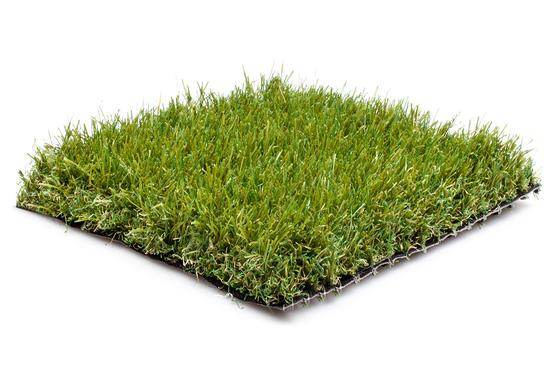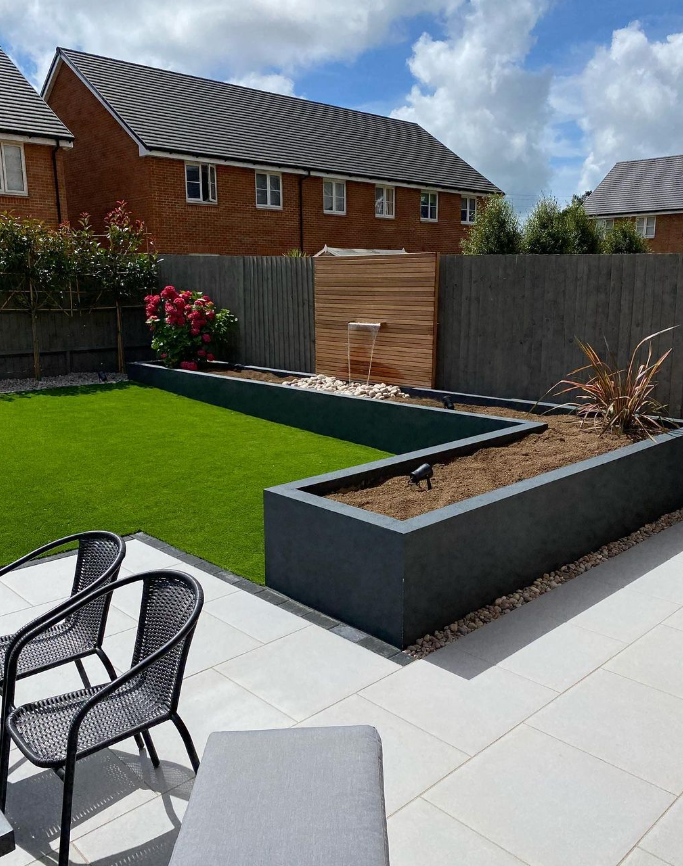
How Much Artificial Sports Grass Do You Need?
Getting the right amount of turf is, in many respects, the foundation of a smooth installation.
A miscalculation can lead to awkward shortfalls, wasted budget, or unexpected delays, and that tends to frustrate both clients and installers.
The good news is that measuring for sports grass isn’t complicated; it just needs a structured approach. From football pitches to multi-use areas, accuracy makes quoting easier and planning more reliable.
This guide walks you through the practical steps of artificial sports grass measurement, with tips on shapes, waste, and safety zones, plus a simple sports grass roll calculator method for working out what you’ll need.
Measuring Your Area

Accurate dimensions are the first step in any sports turf project. Contractors often still reach for a tape measure, which works well on smaller or rectangular spaces. Yet for larger sports grounds, digital tools such as laser measurers or even satellite-based mapping apps usually provide faster, more precise results.
The key point is that your figures must reflect the true length × width of the space; a small mistake here can mean metres of wasted grass or a pitch that simply won’t line up correctly.
For straightforward areas like five-a-side pitches or training zones, a simple square or rectangle calculation is usually enough. This forms the foundation for later steps, including sports pitch artificial grass coverage checks and layout planning. If you’re new to this, a synthetic turf dimensions guide can be a useful cross-check against your own figures.
Quick steps for measurement:
-
Walk the full length and width with your chosen tool
-
Record figures to the nearest centimetre
-
Double-check each reading before moving on
Accounting for Pitch Shape
Not every sports surface is a neat rectangle. Football, rugby and hockey pitches follow standard dimensions set by governing bodies, yet smaller training areas, school multi-use courts or custom layouts can throw a curveball. In those cases, simple length × width won’t always give you the right figure.
Standard pitch sizes are widely available from organisations like the FA or RFU, and these are a good starting point if you’re planning a full-size facility. But many projects involve irregular edges, curved boundaries, or mixed-use zones that don’t sit within a standard footprint. That’s where existing pitch plans, architectural drawings or CAD files become extremely helpful.
By overlaying your measurements onto a scaled drawing, you get a clearer picture of how to measure for sports turf that doesn’t fit a typical template. This avoids under-ordering in awkward corners and helps with sports pitch artificial grass coverage that looks seamless in the finished result. For unusual shapes, digital mapping or layout software can, in a way, make life much simpler than traditional tools alone.
Allowing for Waste and Offcuts
No matter how precise your measurements are, cutting synthetic grass to fit the contours of a sports pitch will almost always create offcuts. Corners, curves and goalmouths tend to leave material that can’t be laid in a single continuous strip. That doesn’t mean it’s all lost, but it does mean you should plan.
The usual rule is to add an artificial turf waste allowance of around 5–10% to your total order. This margin helps cover trimming errors, joins, and the inevitable shaping that comes with installation. Without it, you risk running short mid-project, which can be both costly and time-consuming to put right.
In some cases, offcuts can be reused in training areas, warm-up spaces, or smaller practice zones. So, instead of seeing waste as wasted, think of it as a reserve stock that might save you later.
Factoring in Run-Off Zones
Sports surfaces rarely stop at the white line. Governing bodies for football, rugby and hockey all specify a clear safety margin, known as a run-off zone, around the pitch itself. These areas give players room to slow down, turn, or recover from tackles without risking injury, and they are just as important as the playing surface.
Run-off widths vary depending on the sport, but they usually range from 1.5 to 3 metres. That space needs to be built into your artificial sports grass measurement; otherwise, you may find your installation falls short of compliance.
Adding this extra coverage also creates a more professional finish. A pitch surrounded by the same surface looks seamless and avoids the maintenance issues of having natural grass right up against synthetic turf. For architects and contractors alike, including these zones at the measuring stage is one of the simplest artificial turf installation tips to prevent costly oversights later.
Calculating Grass Requirements
Once you have the length, width, pitch shape and run-off zones measured, you can start working out how much turf is needed. The calculation is fairly straightforward:
Total area ÷ roll width = number of rolls required
Rolls of artificial grass usually come in set widths (often 2m, 4m, or 5m), so matching your pitch layout with the right roll size reduces the number of joins and limits waste. This is where a sports grass roll calculator is handy, it turns raw measurements into a clear order quantity.
Worked example 1:
-
Five-a-side football pitch: 40m × 30m = 1,200m²
-
Using 4m rolls: 1,200 ÷ 4 = 300 linear metres (plus 5–10% overage)
Worked example 2:
-
Hockey pitch: 91.4m × 55m = 5,027m²
-
Using 5m rolls: 5,027 ÷ 5 = 1,006 linear metres (plus 5–10% overage)
Standard pitch sizes with overage allowance:
|
Sport |
Typical Dimensions |
Total Area (m²) |
With 10% Overage |
|
5-a-side |
40m × 30m |
1,200 |
1,320 |
|
7-a-side |
60m × 40m |
2,400 |
2,640 |
|
Hockey |
91.4m × 55m |
5,027 |
5,530 |
|
Rugby (full) |
100m × 70m |
7,000 |
7,700 |
This step pulls everything together. By measuring outdoor pitches for fake grass correctly, you get a reliable order figure that covers both play and safety zones without leaving you short.
Accurate planning is the difference between a smooth installation and a stressful one. From basic square pitches to irregular multi-use layouts, every artificial sports grass measurement should include waste margins and safety zones, with calculations checked against roll widths. By following these steps, you avoid shortfalls, keep projects on schedule, and deliver a professional finish that clients will appreciate.
If you’re ready to order, explore our full range of artificial grass. For tailored guidance on a specific project, contact us, and our team will be happy to advise.


